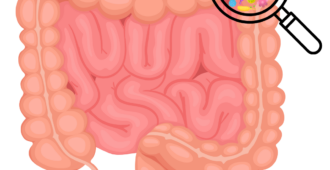The Science Show on ABC Radio National in Australia, features an interview with Professor Justin Yerbury on Saturday 17th August.
The article containing the interview titled ‘Resistant nerves could lead to treatment for neurodegenerative disease‘ is a fascinating insight into Prof Yerbury’s work on the delicate balance of proteins in solution within our nerves and how this is interrupted in MND.
“Most proteins live their life in solution. You can think of them as dissolved, just like you would dissolve salt in water. Under normal circumstances the proteins in our cells are living life on the edge of their solubility and it does not take much to tip them over the edge.”
Professor Yerbury compared the level of protein saturation (like measuring the amount of sugar dissolved in a cup of tea- if the sugar was a protein) in the ocular (eye) nerves that are often spared in MND to the levels in motor nerves affected by MND. The results show that the level of supersaturation of proteins in motor nerves is much higher and at the very upper limit – which is not the case in eye nerves.
In the work published this year they found that the average supersaturation of proteins in spinal nerves is far greater than the eye nerves. Because of this higher level of saturation, spinal neurons are more vulnerable to any slight stress that could cause the proteins to come out of solution (like salt crystals when sea water evaporates) by altering this delicate protein stability balance. When the scales are tipped in this way, this causes the proteins saturation to tip over their physical limit- coming out of solution and forming toxic aggregates (sticky clumps within the nerve cells) which eventually kills the nerve cells.
“While we understand that deposits are associated with dying neurons and that dying neurons become excitable, this work proposes an underlying biochemical principle that helps us join the dots between the two phenomena.”
The neurons affected by MND respond to the disease by turning off or reducing the production and hence quantity of supersaturated proteins, which includes those that control ion channels. Ion channels are themselves protein molecules that span across the cell membrane allowing the selective transport of ions and solutes across the plasma membrane.
The results of the this new work highlights a mechanisms that accounts for the appearance of protein inclusions in MND, and how this disruption to the delicate balance of protein saturation can disrupt other processes that rely on this equilibrium, all of which results in the changes in nerve excitability (often seen as fasciculations or twitches) that is observed in people with MND.

It is hoped that by understanding how to keep this protein saturation balance in check and looking into how eye nerves are spared in MND an effective therapy may be found.
“Understanding what it is that makes some motor neurons resistant to MND might ultimately point us in the direction of being able to use that information to protect all motor neurons from the ravages of MND”
Listen to the interview below and see original ABC interview.
Justin is a professor of Neurodegenerative Disease and living with Motor Neuron Disease.Professor Yerbury will present a plenary talk at the 30th International Symposium on MND/ALS in Perth in December
See also:
When Justin met Stephen Hawking
Researcher Justin Yerbury’s fight to eradicate ruthless disease






